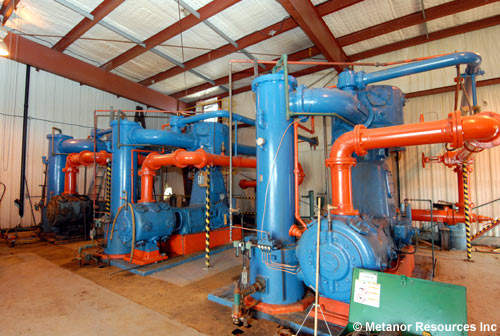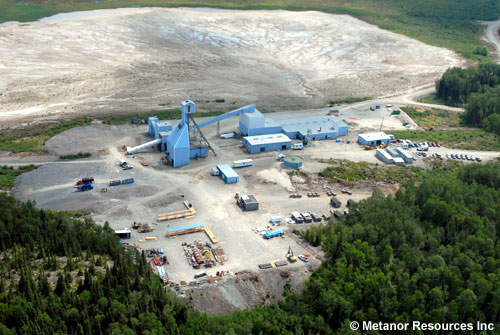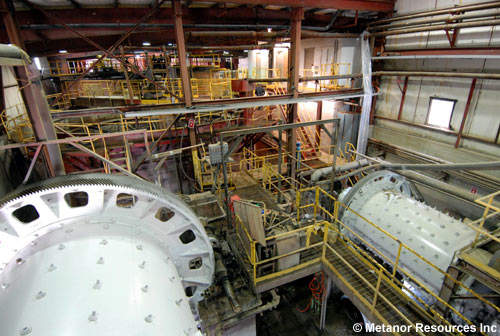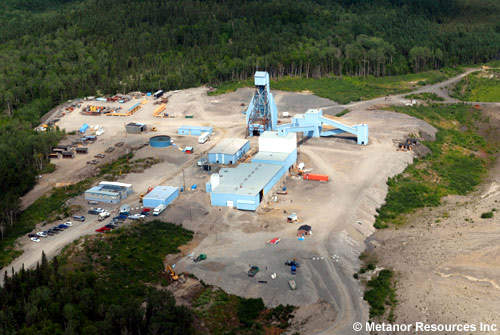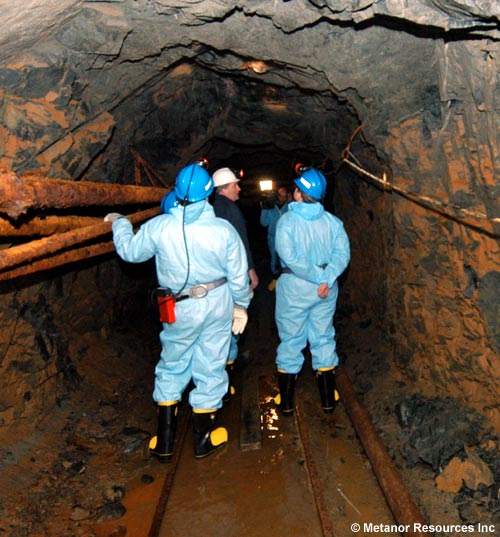Bachelor Lake Gold Mine is located 225km north-east of Val-d'Or in Quebec, Canada. It consists of 177 claims and two mining concessions spread across 4,837.4ha of land. The mine has two blocks: the eastern block (Bachelor Lake claims) and the western block (Hewfran claims).
The eastern block is spread across 1,867.3ha and consists of 51 claims and two mining concessions. The western block has 38 claims covering 683.5ha, where the Bachelor Lake Joint Venture (BLJV) has the right to acquire 100% of interest from Aur Resources Inc (Aur). The BLJV also has 76 claims spread across 1,975.3ha (MJL claims) and 12 claims covering 311.3ha (Hansen claims) adjacent to the Bachelor Lake property.
In November 2004 Metanor Resources Inc (Metanor) acquired the rights to Bachelor Lake from Campbell Resources (Campbell) for $2.3m. Metanor increased the capacity of the mill at Bachelor Lake in an expansion undertaken in 2008. Production from the mine exceeded 20,000oz of gold by February 2009. The company also plans to develop the Hewfran section with proven reserves at levels seven and eight.
Geology
The mine is located at an elevation of 100m and is covered by coarse and sandy glacial deposits. The mine lies west of the Chibougamau-Chapais greenstone belt, which is part of the Abitibi geological sub-province of the Superior Structural Province. Key mineral deposits in the region include the Agnico-Eagle (Telbel Mine), Golden Hope (Estrades deposit), Lac Shortt gold mine (now closed), Meston Lake Gold Mine and Gonzague Langlois Mine (Grevet).
Bachelor Lake has two post-ore fault systems: the Waconichi faults (WAC), trending N050° to N070° and dipping 70° to the south-east, and other faults (T faults), trending N020° to N030° and dipping 80° north-west to vertical. In this mineral resource three structurally controlled quartz veins have been identified: Main Vein, A Vein and B Vein.
Main Vein produces about 90% of the mine's mineral resources. A Vein was recognised at level nine and traced up to level four and, representing the greatest potential for additional resources, B Vein was discovered at level 11 and level 12. Bachelor Lake has two main mineral deposits: Bachelor and Hewfran.
Reserves
The total measured and indicated resources of the mine are estimated to be 841,591 metric tons at a grade of 7.79g/t Au. Of the measured and indicated resources, the Bachelor deposit includes 643,826 metric tons at a grade of 7.96g/t Au and the Hewfran deposit includes 197,765 metric tons at a grade of 7.24g/t Au.
Of the inferred resources, the Bachelor deposit includes 207,517 metric tons at a grade of 6.76g/t Au and the Hewfran deposit includes 218,630 metric tons at a grade of 6.30g/t Au.
Mineralisation
The key mineral resource of Bachelor Lake is gold. Gold associates with pyrite and correlates well with the pyrite content. The pyrite is spread across strongly altered rocks that are fragmented and injected by quartz / carbonates veins and veinlets.
In the mine area occurrences of gold, chalcopyrite and ilmenite have been discovered on the surface. These minerals are finely grained.
The gold and silver materials have a good correlation and appearance (1:1) in the mineral deposits. The highest correlation was observed from 1,919.6ft to 1,924.2ft with 0.631oz of gold and 0.574oz of silver.
Open-pit mining
The mine was operational until 1967 and produced 700,000t of zinc, lead and silver. In the 1980s Bachelor Lake was mined using the underground method. In 2005 it was again drilled after the mine was dewatered.
Infrastructure at the mine includes surface infrastructure and a hoist room, shaft house, mill (500t/day), tailing pond and core shack. A three-compartment shaft provides access to the mine up to level seven and further access is provided by a four-compartment shaft from level seven to level 12.
Access from Bachelor Lake's claims to the Hewfran claims is provided from level four, level six and level eight.
The 500t/day mill consists of a head frame, bins, hoist and air compressor complex and substation. It also has an underground mine, ore processing complex, tailing disposal area, an office, warehouse and shop complex.
Expansion
After acquisition Metanor performed an advanced underground exploration programme to increase resources at the mine. The programme lasted for 12 months and focused on changing the hoist, deepening the shaft, developing drifting for underground drilling and bulk sampling.
In April and July 2005 an exploration and drilling programme was conducted and 69 holes totalling 13,345.55m were drilled. Of the holes, 40 intercepted resources with a cut-off grade of 3.43d/t Au on a minimum horizontal width of 1.5m or higher, while eight holes at a minimum horizontal width of 6m and 14 holes at a minimum horizontal width of 1.5m or higher had a cut-off grade of more than 10g/t Au.
On level 12 two fixed drill stations drilled the mine through azimuth drilling. Drill Station One drilled 6,854.55m and Drill Station Two drilled 6,496m.
In 2007 a feasibility study for mill rehabilitation and production start-up was conducted. Following these studies the development potential of the mine was established at 35,000oz/y to 40,000oz/y of gold for at least three years.
By December 2008 the operating capacity of the mill was increased by modifying and installing new motors. Until February 2009 the mill capacity was increased to 800t/day at minimal cost.

